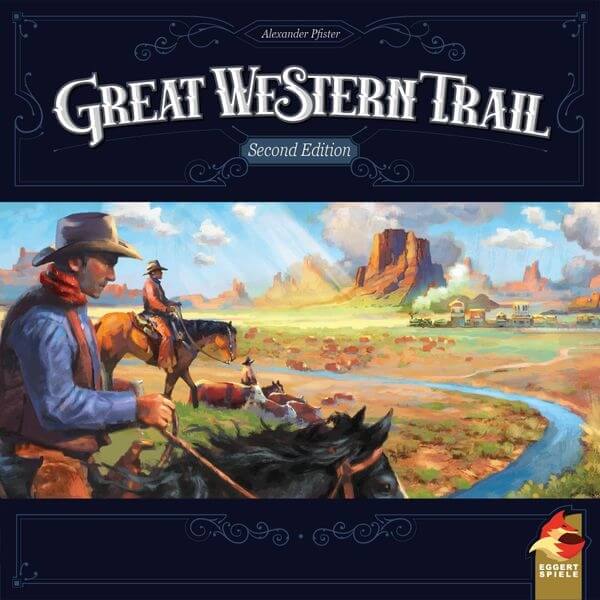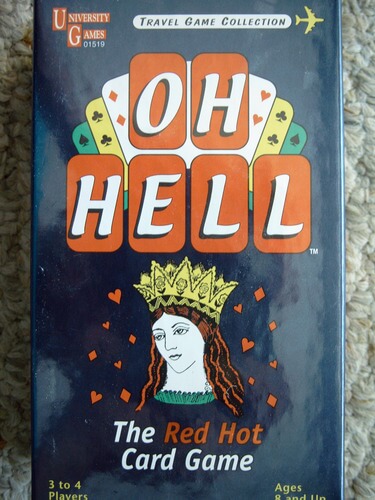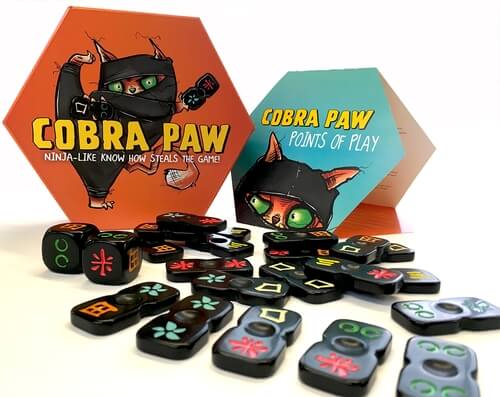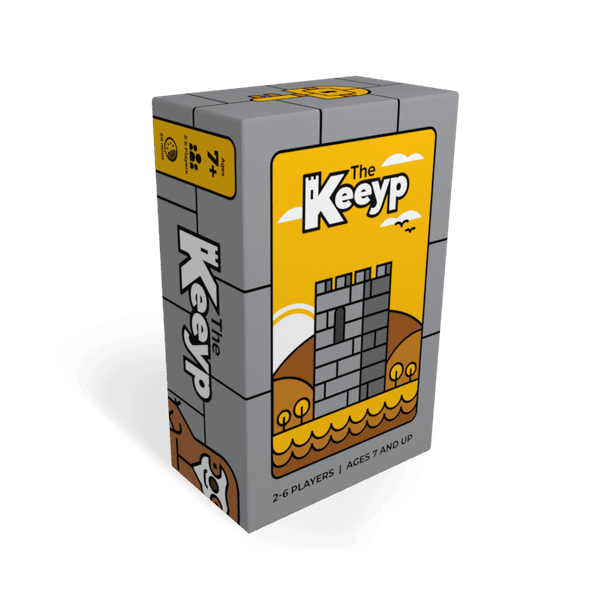
Great Western Trail: Second Edition
In Great Western Trail: Second Edition, players take on the role of cowboys competing in a fascinating journey through the American West in the 19th century. In each game, you must guide your cattle along an iconic trail, from South Texas to Houston, where they will be shipped by train, guaranteeing profit and victory points. To succeed, it will be essential to hire a competent team: cowboys to improve your herd, craftsmen to build cribs and engineers to improve the train tracks. With the new edition, the experience has been enhanced with new art by Chris Quilliams, a challenging solo mode, double-layered player boards and the addition of a new breed of cattle, the Simental. You'll also find two new reversible buildings, twelve new trading tokens to expand interaction between players and four new Master tiles that offer even more strategy and replayability. Get ready to manage your herd with cunning and make the most of every opportunity during your adventure in the Great West.Artists: Alexander Pfister; Chris Quilliams
Designers: Alexander Pfister;
Date: 2021
Note: 8.9
Mechanics: Collecting Sets, Hand Management, Movement on the Trail, Variable preparation, Property, Solo
Table of Contents
- How to Play
- Tips for playing
- Game mechanics
- Game components
- Additional Information
OBJECTIVE OF THE GAME
Tips for playing
Here are some tips for doing better in the game Great Western Trail: Second Edition:
- Concentrate on improving the type of cattle you own, as this increases your rewards when you deliver them to Kansas City.
- Make good use of your actions in buildings owned by other players, considering paying the tax on actions that can benefit your strategy.
- Develop your strategy in a balanced way, paying attention to improvements for your personal board, such as locomotives and hand capacity.
- Acquire workers strategically to maximize the efficiency of your actions and get more points at the end of the game.
- Plan your delivery route taking into account the train's progress, as this can avoid losing money by delivering to the first destinations.
Video about the game
GAME mechanics
- Collecting Sets: In Great Western Trail: Second Edition, players collect different types of cattle to maximize their points during deliveries in Kansas City. Each varied set of cattle cards results in a higher payout, encouraging the player to diversify their deck and look for strategic combinations.
- Deck building: Players start with a basic deck of cattle cards and, over the course of the game, acquire more valuable cards to improve their deck. Efficiency in acquiring and playing cattle cards is crucial to a winning strategy, allowing for better sales and more points.
- Bags and parts: The game uses a bag system to draw worker pieces and hazards, which affect tactical decisions on the board. Strategies revolve around how best to mitigate these random challenges by hiring workers and developing skills.
- Hand Management: Players must carefully manage their hand of cattle cards, deciding which cards to play and reserve, or when to buy new cards. Each decision directly influences the ability to make profitable and efficient deliveries in Kansas City.
- Solo: The Second Edition includes rules for a solo game mode, where players compete against an automated opponent that simulates the tactical decisions of a real opponent. The player must adapt their strategies to overcome the predictable and random actions of the virtual opponent.
- Variable preparation: The game setup varies with each match, influenced by the random positioning of neutral buildings, dangers and worker opportunities. This variability guarantees a unique challenge for each game, requiring strategic adaptations from the players.
- Ownership: Players have the opportunity to build their own buildings along the trail. These customized buildings confer unique advantages and block or modify routes for opponents, incorporating a tactical and strategic element to movement.
- Track Movement: The main board consists of a track along which players move their pawns. Each move must be carefully planned, taking into account own, neutral and opponents' buildings, as well as the dangers present, in order to optimize actions and prepare effective deliveries.
Game components
See all the items in the game below Great Western Trail: Second Edition:
- 1 Main tray
- 4 individual trays
- 92 Cattle letters
- 28 Goal cards
- 54 worker tiles
- 18 risk tiles
- 22 Camping tiles
- 47 Building tiles
- 4 player count tiles
- 5 Railway station tiles
- 4 special tiles
- 12 Trade tokens
- 4 Cattle farmers
- 4 Locomotives
- 56 Control disks
- 4 Certificate markers
- 55 Game coins
- 1 Labor market token
- 1 Scoring pad
- 1 Instruction manual
Additional Information
- Ludopedia link: https://ludopedia.com.br/jogo/great-western-trail-second-edition
- Link Tabletopia:
- Amazon Brazil link: Comprar Great Western Trail: Segunda Edição
- Amazon USA link: Comprar Great Western Trail: Segunda Edição


